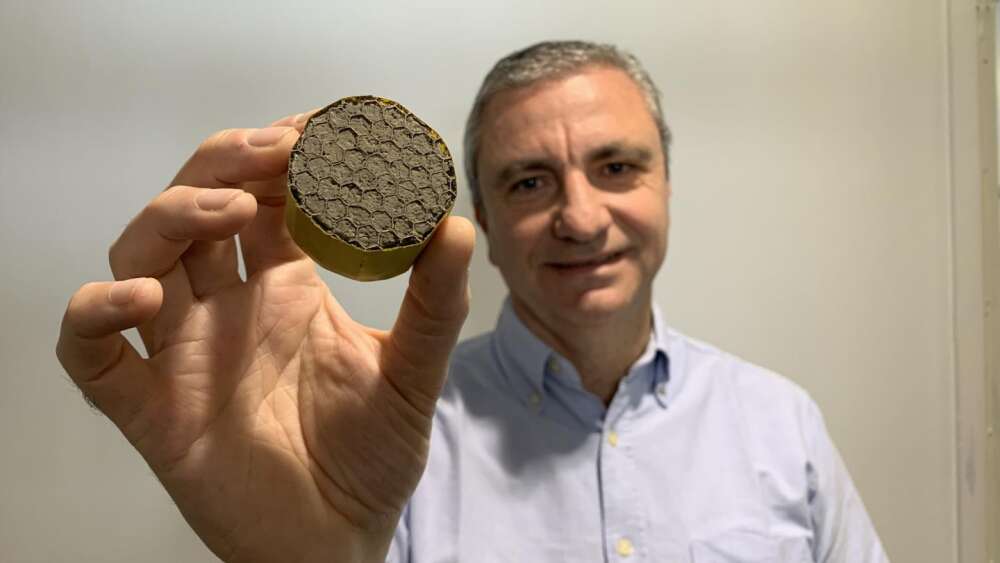
Professor Michele Meo With The Aerogel
Researchers at Bath’s Materials and Structures Centre (MAST) have state that they’ve made a breakthrough in terms of reducing the noise caused by aircrafts. They’ve done this by creating an ultra-light material that can dramatically reduce the level of noise created.
The material is graphene oxide/polyvinyl alcohol aerogel (a 2D lattice of ultra-light graphene mixed with a polymer that is found in glue) that has the ability to absorb a massive amount of sound while adding almost no additional weight to the aircraft.
The addition of aerogel to passenger aircrafts, the overall flying experience and comfort could dramatically increase while also reducing noise complaints from surrounding areas. This research was published in Nature Scientific Reports.
According to Professor Michele Meo: “This is clearly a very exciting material that could be applied in a number of ways – initially in aerospace but potentially in many other fields such as automotive and marine transport, as well as in building and construction.”

The Material Will Significantly Reduce Noise Created By Aircrafts
The reason behind the light weight and the impressive noise-insulating properties is due to the graphene-based aerogel created by researchers that is then embedded in a honeycomb scaffold structure. Because the aerogel is porous, it dissipates sound through the transferred energy from sound to thermal energy as the waves collide with the porous walls, creating friction.
While many porous materials are very effective at dissipating sound, they tend to be way to bulky and heavy to be used in aerospace areas. By using the porous aerogel, which is ultra-light, the researchers were able to reach this ability of significantly reducing noise and also significantly reducing the weight of the insulation.
The aerogel was able to reduce noise by 15.8 decibels, which would bring it down to the noise that is “closer to that of a hair-dryer,” according to the researchers on the team.
The researchers are now working on finding a way to improve the material so that it will also offer heat dissipation, but that is still in process.

This Noise Reduction Will Improve Flyer Experience








